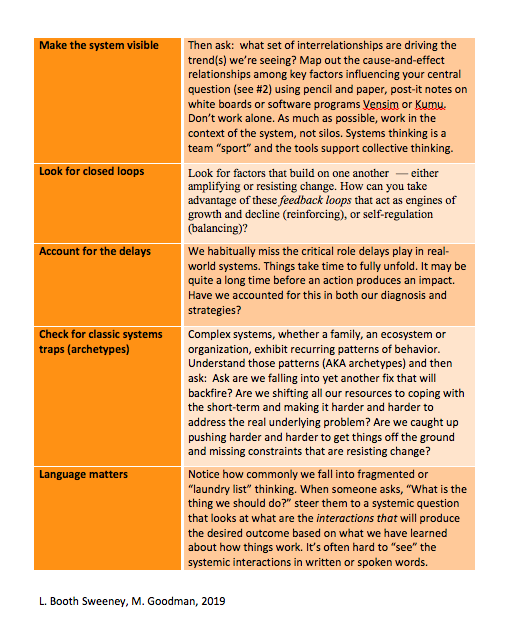Got Complexity?
Surgeon and author Atul Gawande looked at the extreme complexity of knowledge in a range of fields from medicine to disaster recovery. He found that avoidable failures could be dramatically reduced with a simple tool: a checklist.  Simple surgical checklists such as those described in Gawande’s book, The Checklist Manifesto, have been adopted in more than 20 countries and are considered the biggest clinical invention in 30 years.
Simple surgical checklists such as those described in Gawande’s book, The Checklist Manifesto, have been adopted in more than 20 countries and are considered the biggest clinical invention in 30 years.
In almost every profession, we deal with complexity. If you’re working to ensure food security, create a zero-carbon future, foster a healthy democracy, cultivate healthy communities and safe school environments, eliminate slavery in supply chains, safeguard water sources, resolve sectarian conflict, protect endangered species, restore forests or other seemingly intractable issues, you are likely challenged on a daily basis to help others see the impact of our actions on the often tightly interconnected systems of which we are a part. In the case of climate change, a systems view shows us the link between politics, policy (for example, legislation related to carbon emissions and deforestation), the natural sciences (particularly forests, which help stabilize the climate by absorbing heat-trapping emissions from factories and vehicles), and a person’s own consumption habits. Without a systems view, the complexity can be daunting, and the result is often policy resistance or, worse yet, polarization and political paralysis.
In my work as a complex systems coach and teacher, I often hear people say: “But where do I start?” To answer that question, my colleague Michael Goodman and I created this simple checklist as a guide for framing complex issues. There are of course more “checklists” for enacting systems change. But this is a good place to start. We hope you find this helpful.


For those of you who are familiar with the iceberg model, you will some overlap with this checklist. Here Mike Goodman explains: “While there is some overlap with the six steps, this checklist is meant to highlight some important elements of systems thinking not very visible in the six steps alone. The six steps were based on traversing the iceberg from top to bottom with some amount of iteration:
1. Tell the Story
2. Draw Graphs
3. Draft Focusing Question
4. Identify the Structures
5. Apply the Going Deeper Questions
6. Plan an Intervention
In contrast, the checklist focuses on identifying the change, thinking about boundaries, making structure visible using closed loops, delays and archetypes and power of language. The two go together but are different.”
We would love to hear from you. Comment here, or join the conversation on LinkedIn.




